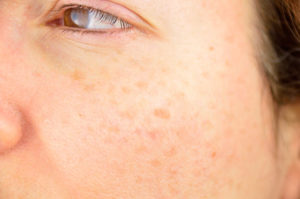 The sun’s UV rays can damage the skin, leading to sunspots, discoloration, dryness, and even premature wrinkles. If sun-damaged skin is holding you back from bright, healthy skin, dermaplaning can help address the damage and rejuvenate your appearance.
The sun’s UV rays can damage the skin, leading to sunspots, discoloration, dryness, and even premature wrinkles. If sun-damaged skin is holding you back from bright, healthy skin, dermaplaning can help address the damage and rejuvenate your appearance.
What is Dermaplaning?
Dermaplaning is a non-invasive exfoliating treatment. A specially designed, sterile blade is used to remove the outermost layer of the skin consisting of dead, damaged skin cells and peach fuzz. The exfoliating scalpel used in dermaplaning looks much like a razor blade that you would use to remove body hair.
The Dermaplaning Process
During a dermaplaning appointment, your aesthetician will start by gently cleansing the skin to remove dirt, oil, and other impurities from the skin. Next, the specialized blade is moved carefully across the surface of the skin, removing dead skin cells, fine hair, and debris. The procedure is completed by applying a soothing product to the face, as well as sunscreen to prevent sunburn.
No downtime is required after dermaplaning. This makes it a quick and convenient treatment option for people who want brighter, healthier skin but don’t have time to spare for more invasive treatments.
Dermaplaning For Sun-Damaged Skin
The dermaplaning process smooths out the surface of the skin while reducing the appearance of scarring, discoloration, and other signs of sun damage. It’s also a safe and low-risk procedure, so you won’t have to worry about further irritating the skin. Typically, patients with sun-damaged skin notice that their skin appears brighter and healthier immediately after treatment, although it will take a few days to see the full results.
After dermaplaning, the skin is extra-susceptible to sunburn. So, make sure to apply sunscreen every day and reapply throughout the day if you’re spending time outside.
If you’re interested in dermaplaning to reduce the appearance of sun damage, contact Florida Face and Body to schedule an appointment.
